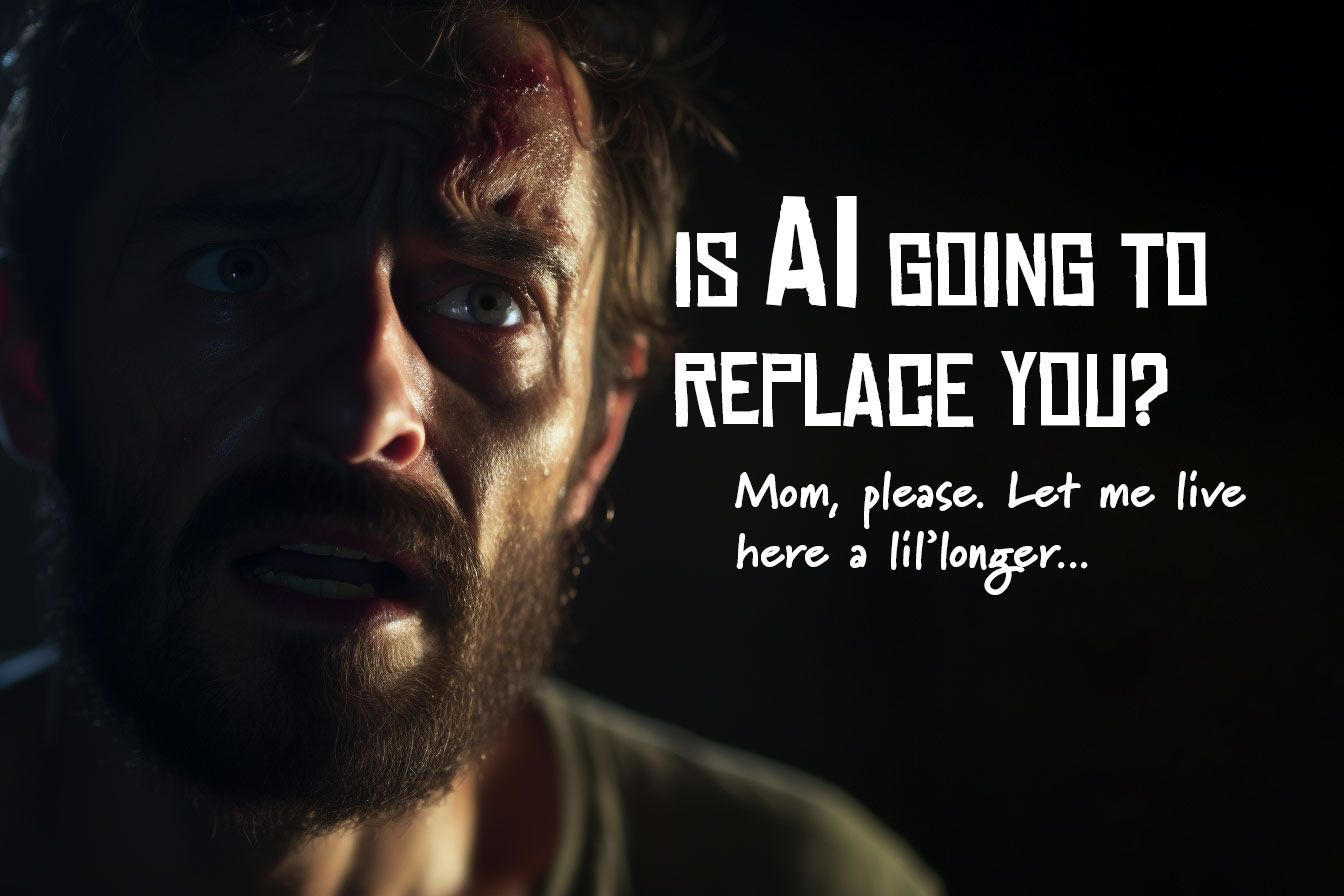
Facing AI Anxiety: Why AI Isn’t the End of Photography
There are words going around in the photography industry, a growing unease, a subtle buzz around a new villain on the scene – artificial intelligence. The whispers in the studio corners, the hushed tones over, all voicing the same concern, but I want to talk about Why AI isn’t the end of photography.

Is AI going to replace us photographers?
Take a step back, put your fears on the backburner, and let’s address this head-on. AI isn’t here to put all photographers out of work. Yes, it may impact certain specialized roles, demanding a shift in approach, but it also brings forth new opportunities that could push you to evolve. In some fields, authenticity still holds the front seat and AI is far from replacing that. We’ll explore these facets in detail as we progress.
We’ll shatter some AI myths, shed light on the technology’s actual role in photography, and unveil how it’s reshaping the industry’s financial landscape. You’re a photographer with a passion to succeed in this AI age – and we’re here to show you how AI could be your next big break.
Table of Contents
The Fear: Is AI Really a Threat?
The fear of the unknown is a powerful one. And when that unknown involves something as groundbreaking and revolutionary as artificial intelligence, that fear is magnified. Conversations about AI often come packed with doomsday predictions about machines taking over our jobs.
Is there validity to the fear that AI could replace photographers?
The straightforward answer is, not entirely.
Why AI Isn’t the End of Photography
Sure, AI has the ability to perform tasks that were once exclusively human. For instance, AI-powered image editing tools can process and edit photos, making specific adjustments we thought only a human could execute. Indeed, AI can learn to “see” and analyze visual data, making decisions about composition, lighting, and even subject matter.
But let’s flip the coin – the current AI advancements remains a tool, a means to an end. It doesn’t possess the creativity, intuition, or empathic understanding that you as a photographer do. It can’t grasp the subtlety of human emotion or the intricate nuances that make a photograph more than just a collection of pixels.

Yes, AI may alter the way we work, pushing us to adapt and evolve. However, it won’t replace the need for a human behind the camera, capturing the world with passion, skill, and a unique perspective. Don’t fear. AI isn’t your enemy. It might just be a catalyst, prompting you to innovate and reach new heights in your ideas.
Don’t Become Obsolete
However, here’s an essential caveat: AI, while being a tool for now, might become a problem in the future if we refuse to learn and adapt. Ignoring the wave of AI would be like insisting on using a film camera in a digital age. You risk becoming the dinosaur of your industry, left behind as the world moves forward. I promise I am not a sentient AI tricking you into submission.
More importantly, this isn’t about a grim future where AI is sentient and we’ve bigger issues than job security. It’s about embracing the potential of AI right now. As we move deeper into this topic, let’s transform that fear into curiosity, and learn how AI can unlock new opportunities for you in the photography industry. In other words, let’s not just learn to survive in this AI-driven world – let’s learn to thrive.
6 New Money Making Opportunities for Photographers
Shift your focus from the threat narrative and let’s explore the exciting part: the new money-making opportunities AI is opening for photographers.
AI is more than just software that edits and create fake photos. It’s an evolution in technology that can add value to a photographer’s work, creating new possibilities for income.
How can photographers use the power of AI to pad their wallets?
Consider the use of AI in editing and post-production.
Sure, the thought of AI handling what was once a meticulous manual process might make you feel uneasy. However, this can free up valuable time that can be redirected towards more creative, revenue-generating activities. Why spend hours editing when AI can do the heavy lifting for you? The quicker you complete projects, the more projects you can take on – and that means more money flowing in.
AI technologies can enhance your photography services.
By integrating AI into your workflow, you can offer clients something extra. Think of AI-powered drones for aerial photography, or AI-based software that can generate digital art from your images. You could create AI-aided virtual tours for real estate or event photography, adding another layer of value to your service and thereby commanding higher fees.
The rise of AI brings with it a surge in demand for AI training data.
- Who better to provide high-quality, varied imagery than artists and photographers? The surge of AI has opened up a new income stream as these images are in high demand for training AI models. Even more exciting is the advent of Web3, a space where your data isn’t just valuable—it’s a potential source of revenue.
- As we venture into this future, your artistic contributions could become significant financial assets, redefining your role in AI and intertwining it with a new kind of profitability in the Web3 era. Own your content, earn more and get paid quicker with Hyprr.
The educational opportunities.
As AI becomes more prevalent in photography, there will be a growing demand for experienced photographers who can teach others to integrate and use AI in their own practice. Offering workshops or online courses on AI in photography could become a lucrative sideline.
Ecommerce is a Goldmine for Photographers.
- The ecommerce industry may have slowed due to current economic challenges, but this is just the calm before the storm. As we recover, we’ll witness a surge of budding entrepreneurs who will need high-quality photos for their products. But quality photography can be expensive, and that’s where AI can fill the gap. Imagine using Stable Diffusion’s fine-tuning abilities and LoRa model training specifically for fashion ecommerce. You’d be creating a new market for high-quality, AI-generated product photos, opening up opportunities for dropshipping unique, eye-catching images.
- I predict this will revolutionize social media and ecommerce as we know it. I’m currently exploring this and plan to share my findings and techniques in a later post. I’m also collaborating with an innovative social media platform, www.hyprr.com, where these ideas are being integrated into their ecosystem. Stay tuned for more on that!
Content Creation.
- Content creation has become an industry in its own right, growing exponentially year by year. With the proliferation of AI tools, the barrier to entry is getting lower, and suddenly, everyone is a creator. But with this ease comes an inundation of content, raising the stakes for those who want to stand out. And here’s where you can leverage AI. Transform your photography into cinematic experiences, build expansive universes, create captivating narratives.
- This is what I’m doing with my photography work. I prioritize authenticity and real human connection, and see AI as a partner, not a replacement. I firmly believe this is one of future branches photography – a new frontier for cinematic photography, storytelling, and networking. For me, photography isn’t just about taking photos anymore; it’s about transforming models into actresses, static images into dynamic stories.

I’m building a unique universe called DangerGirl, combining my photography with skills collected over years. I’ll openly share this development and will gladly collaborate with like minded individuals who would like to build it with me.
The key is to adapt and innovate, to see AI not as a threat but as a tool that can open up a world of opportunity. Remember, AI is here to aid and augment human capabilities, not to replace them. By leveraging AI, you can enhance your creativity, expand your service offerings, and tap into new markets – all of which translate into increased revenue. AI is the unexpected ally in your photography career.
7 Ways Photographers can Adapt with Powerful Apps

In the face of change, adaptability is key. Artificial Intelligence is not just a threat but also an enormous opportunity for photographers. By using AI as a tool, we can push our creative boundaries and simplify our workflow. Here’s how you can leverage AI in your photography:
Image Enhancement with Skylum’s Luminar:
This AI-powered tool can automatically enhance the quality of your images, saving you hours of post-processing work. It has the ability to smooth skin, remove noise, and adjust lighting with a few clicks. In the future I will be creating tutorials on Luminar’s toolsets.
Video Generation with RunwayML’s Gen2 and Pika Labs:
These powerful AI video generators can transform static images into dynamic videos. Gen2 even offers the ability to interpolate images to create smoother videos. These tools are redefining the scope of video creation, allowing photographers to expand their creative offerings.
3D World Creation with Luma AI and RealityCapture:
Photogrammetry has opened up a new world for photographers. Tools like Luma AI and RealityCapture allow you to capture real-world images and transform them into detailed 3D worlds, which can then be imported into platforms like Unreal Engine for further enhancement.
www.capturingreality.com | www.lumalabs.ai | www.unrealengine.com
Open Source Collaboration with Stable Diffusion’s Models:
With Stable Diffusion, you can train your own AI models locally, keeping your work personal and secure. But the main draw here is the growing collection of open-source extensions developed by creators around the world, allowing you to leverage the collective power of the global creative community for your projects. It’s not just about image generation, but about building revolutionary tools and applications.
Writing Aid with Jasper.AI and CopySpace.AI:
One of the first AI writing tools on the market, Jasper has been an invaluable tool for many creators. From writing product copies for ecommerce stores to generating creative content, it’s a powerful tool to add to your arsenal.
Voice Generation with Elevenlabs:
For photographers looking to add another layer to their creative projects, Elevenlabs offers generative voice AI. You can create custom voices for characters in your images you created with models or people you’ve worked with, bringing a whole new level of immersion to your work. If you’re shy, you can use it to read your blogs.
Image Generation with Midjourney and Photoshop’s AI Tools:
Midjourney has pioneered “AI Photography,” generating stunning images using AI. Used in combination with your own work and Stable Diffusion, this can offer a rich source of inspiration and ideas. Photoshop’s new AI tools also offer impressive capabilities for image generation and restoration, adding to the creative possibilities.
It’s important to remember, these AI tools don’t exist in isolation. They can be used in unison, each tool contributing to a larger, more complex project. While AI may add complexity to our workflows and demands on our skills, it also pushes us to think beyond our comfort zones and create more complex, ambitious projects. Rather than replacing us, AI is challenging us, pushing us to innovate and evolve.
By embracing AI, you’re not sacrificing creativity. You’re expanding it. You’re automating the mundane tasks to focus more on the artistic aspects of photography. As we adapt and leverage AI, we’re not just surviving in the digital age – we’re thriving and pushing the boundaries of what’s possible in our craft.
AI Innovations: Paving the Way for Profitable Photography

If we rewind to a few years ago, the idea of AI-powered tools might have sounded like a plot from a sci-fi movie. But fast forward to today, and it’s our reality. Not only are these technologies changing how we create, but they’re also unlocking new ways to monetize our work. Here’s how AI is helping photographers diversify their income streams:
Stock Photography:
With AI, you can quickly process and edit a large volume of photos for stock photography websites. These platforms are always in need of high-quality, diverse images, and AI-powered tools like Skylum’s Luminar help you meet that demand efficiently. Adobe has launched a new program for their Adobe Firefly service where every user’s art or images being used for AI learning will be compensated. Adobe is developing a compensation model for Adobe Stock contributors and will share details once Adobe Firefly is out of beta12. You can find more information about Adobe Firefly on Adobe’s website.
Ecommerce Photography:
AI tools like Stable Diffusion and Midjourney can help you create unique, eye-catching product images for ecommerce stores. Whether you’re selling your own products or offering your services to other businesses, this is an avenue that’s ripe with opportunity.
Online Tutorials and Courses:
Your experience in using these cutting-edge AI tools can be turned into online tutorials and courses. Many aspiring photographers and creators are looking to understand AI and its applications in photography. Platforms like Udemy or Skillshare provide a perfect avenue for this.
3D Visualizations:
AI’s ability to turn photos into 3D models opens up a whole new service offering for photographers. You can provide 3D visualizations for architects, real estate developers, or even game designers.
Personalized Art:
Using AI, you can create personalized art pieces for clients. Tools like Midjourney can be used to generate unique pieces that can be sold as prints or digital downloads.
The Training Dilemma:
To produce those “photography-like” images, AI needs training. It learns from vast datasets—images labeled by humans. These training sets shape its understanding of aesthetics, composition, and visual appeal. So, in a twist of irony, photographers contribute to AI’s education. Imagine a symbiotic relationship where photographers feed AI, and AI, in turn, inspires photographers.
AI’s role in the photography industry is only set to grow. As these technologies advance, we’ll likely see more opportunities emerging. The key to capitalizing on these opportunities lies in staying informed, constantly learning, and being ready to adapt to the evolving landscape.

Fear to Opportunity: AI in Your Photography Career
We’ve touched on ideas using AI in photography, cutting through the rumors, understanding the reality, and discovering the goldmine of opportunities that it offers us. We’ve faced the fear, looked it straight in the eye, and seen that instead of being a monster, it’s more of an unexpected ally, a tool, a key to unlock unprecedented creative and financial potential.
The primary takeaway? Adapt or perish. The realm of photography is going through a metamorphosis, and if we want to stay in the game, we have to evolve with it. This doesn’t mean abandoning the craft that we’ve honed or the artistic soul that defines us as photographers. No, it means enhancing those with the power of AI, boldly venturing into unknown territories. Remember, a tool is only as beneficial or harmful as the hands that wield it.

Don’t Become a Relic
So, here’s the rallying cry for all you brilliant shutterbugs out there: Don’t become a relic of a bygone era. Embrace AI, understand its intricacies, wield its potential, and make it an extension of your creative voice. It’s time to turn fear into opportunity.
I’ve walked this path, and I can tell you, AI hasn’t stolen my job. Quite the contrary, it’s given me new ways to express my creativity and expand my business. And the exciting part? I’m just one among many photographers around the world who are morphing this perceived threat into a valuable sidekick.
We’re on the threshold of a new epoch in photography, a time where human creativity and artificial intelligence will thrive together. Are you ready to step over the line?
Because the future of photography is about more than just capturing the world as it is. It’s about painting a vision of what it could be, through the combined vision of the human eye and AI. Let’s not just survive in this world – let’s rule it.
Ultimately, photography is about genuine connections and shared experiences. It’s about the magic of human encounters, the creation of memories, and the powerful network that emerges from these interactions. It’s a process of capturing authenticity, cementing relationships, and fostering a community.
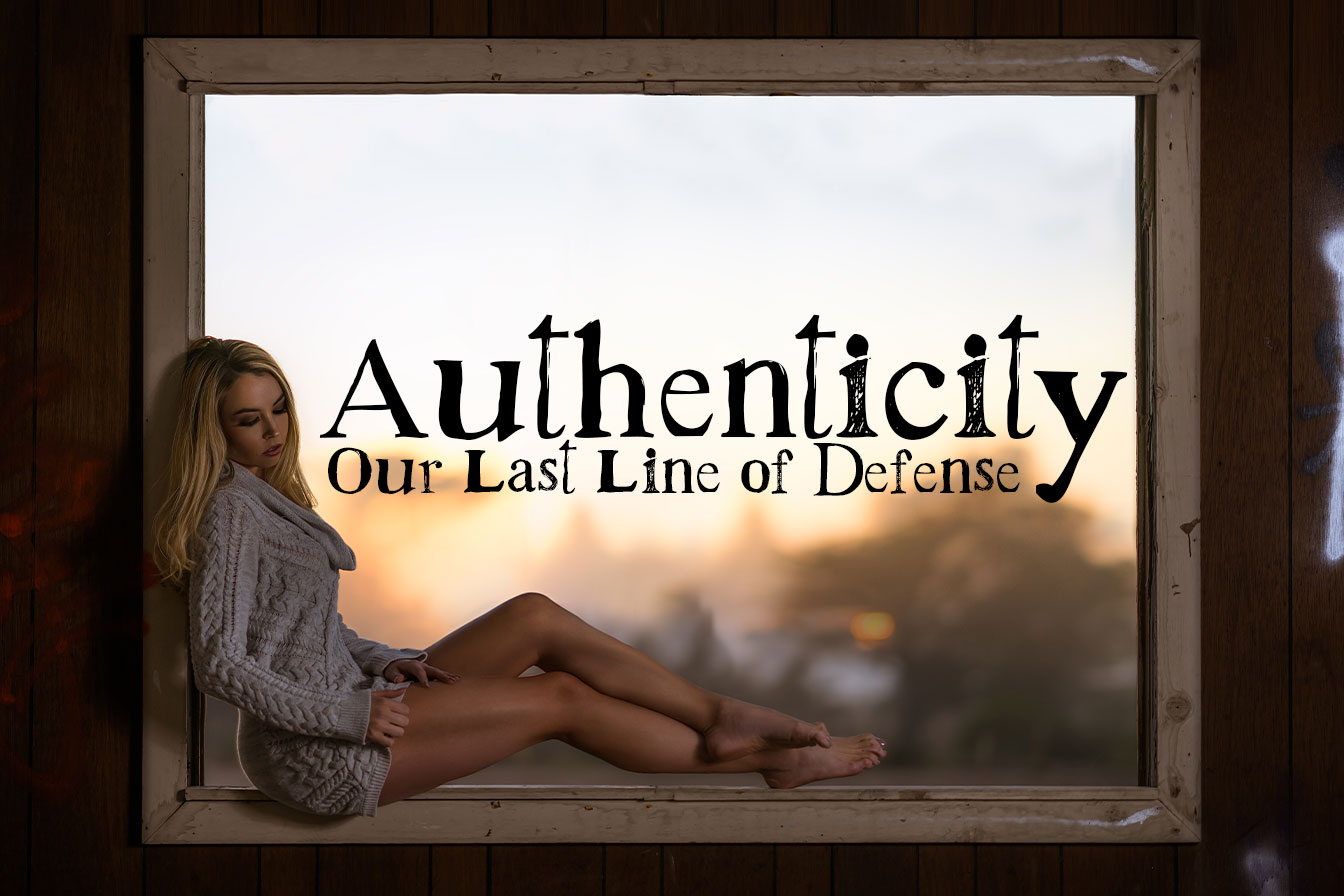
What is authenticity? It’s a question that seems straightforward on the surface, but as we go deeper, we find it elusive, multifaceted. In the context of photography, I see authenticity as the infusion of realness into every image, a tangible human connection that resonates beyond the pixels.
In upcoming posts, I’ll go into details on how these tools can lead to financial success. For those saying photography is dead – it’s just evolving. So, keep following and stay tuned. Together, we’ll explore how to thrive as photographers in this AI era and make rich people money with it.
Related Articles:
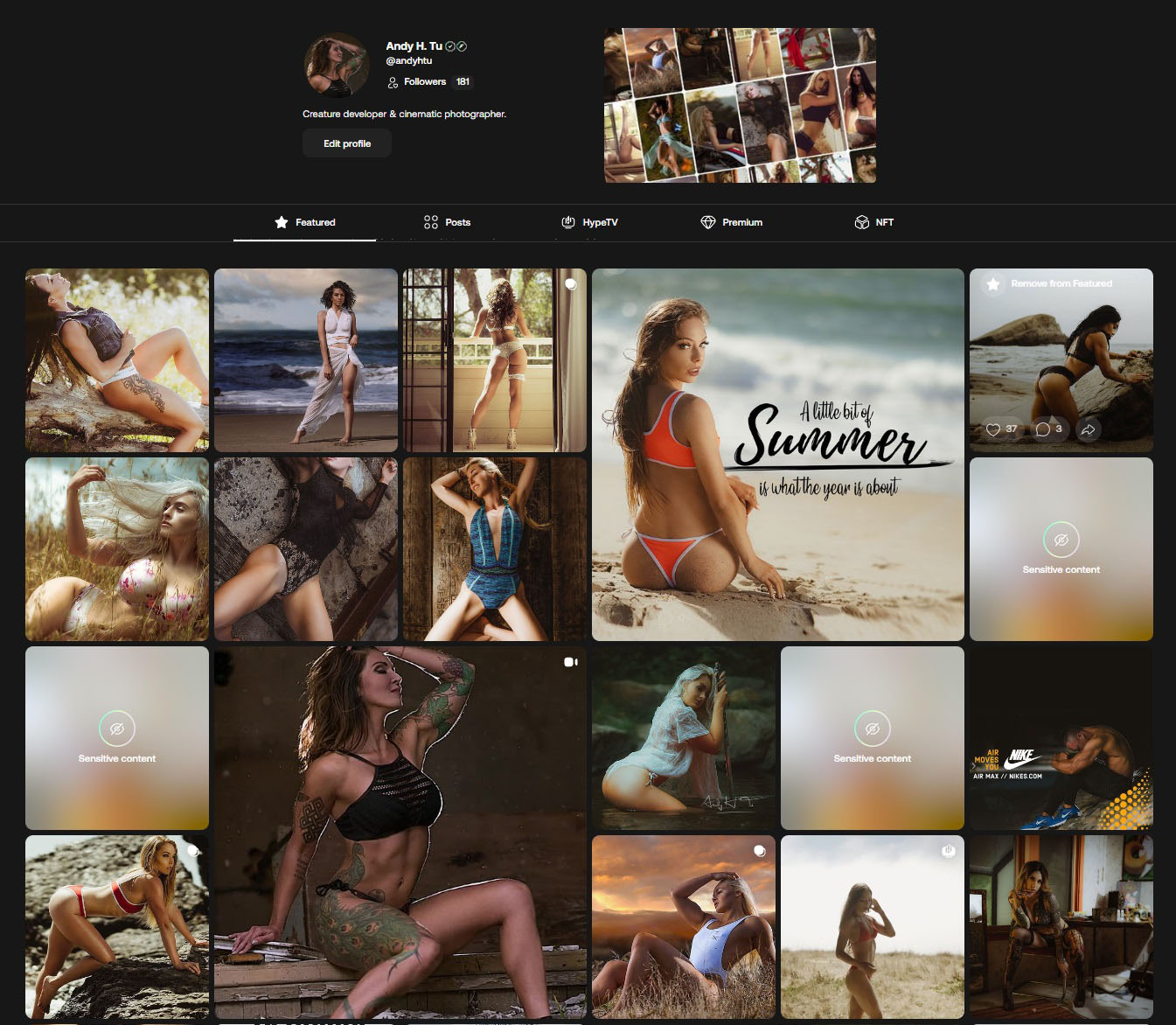


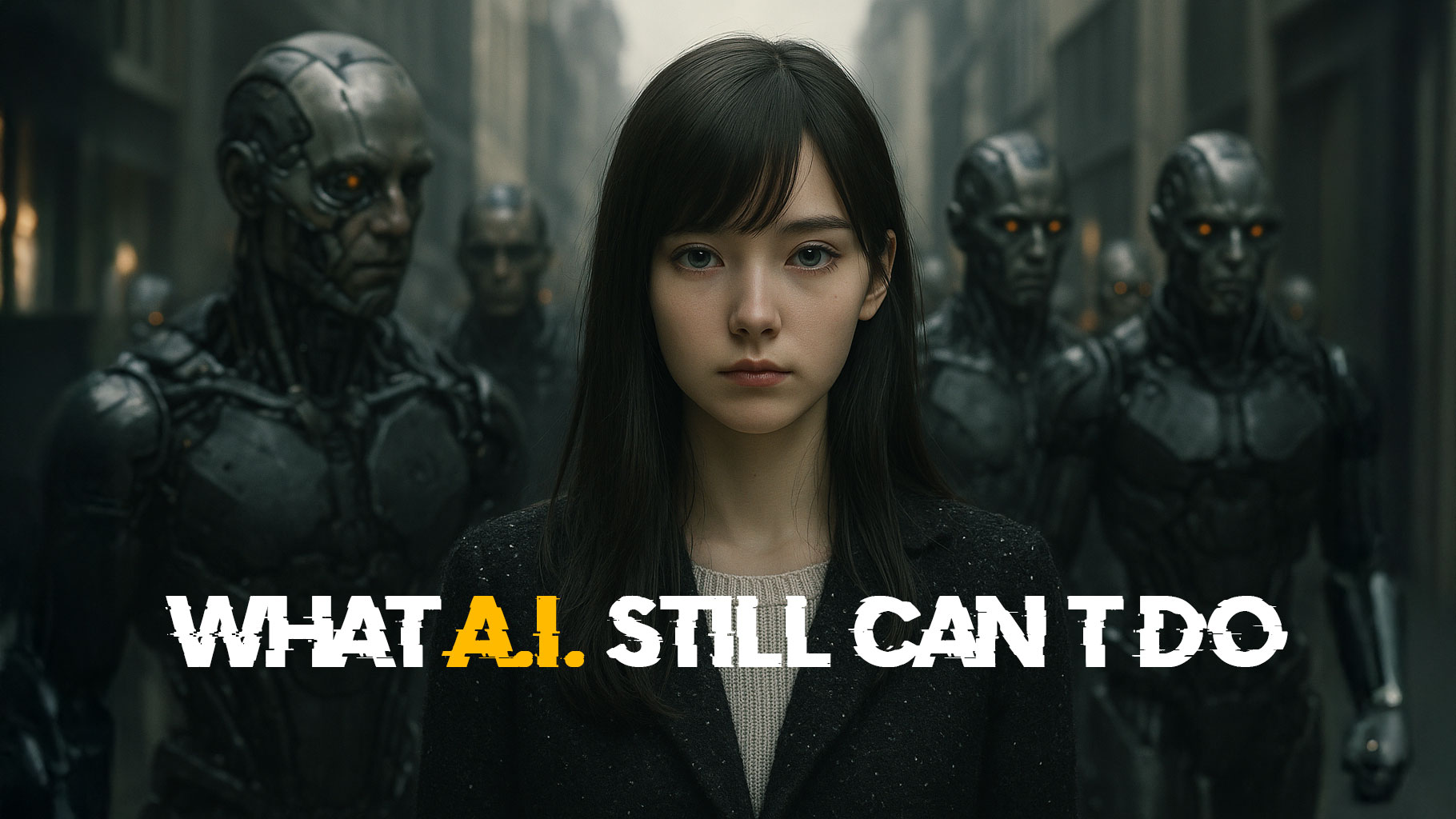


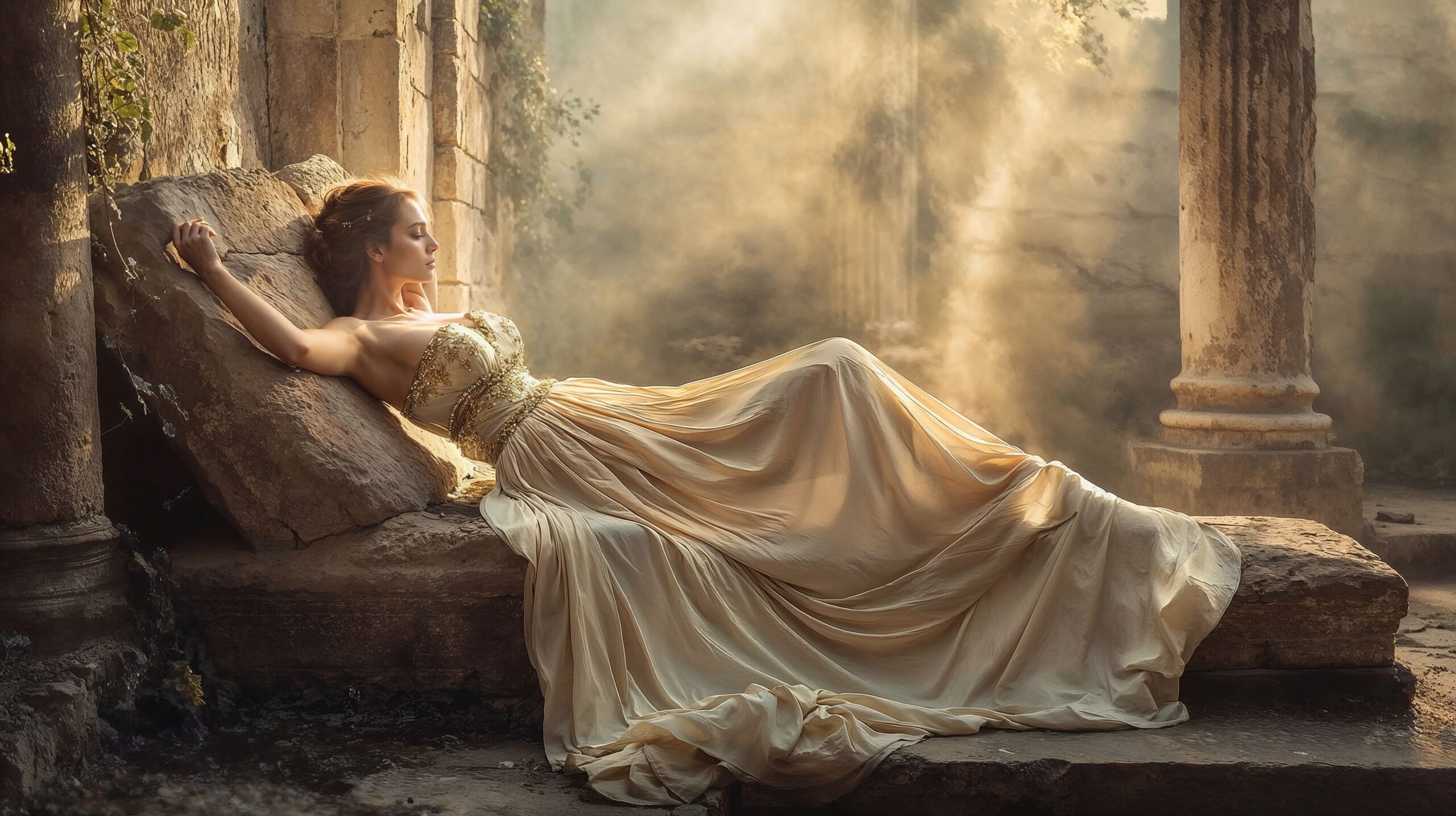

Leave a Reply